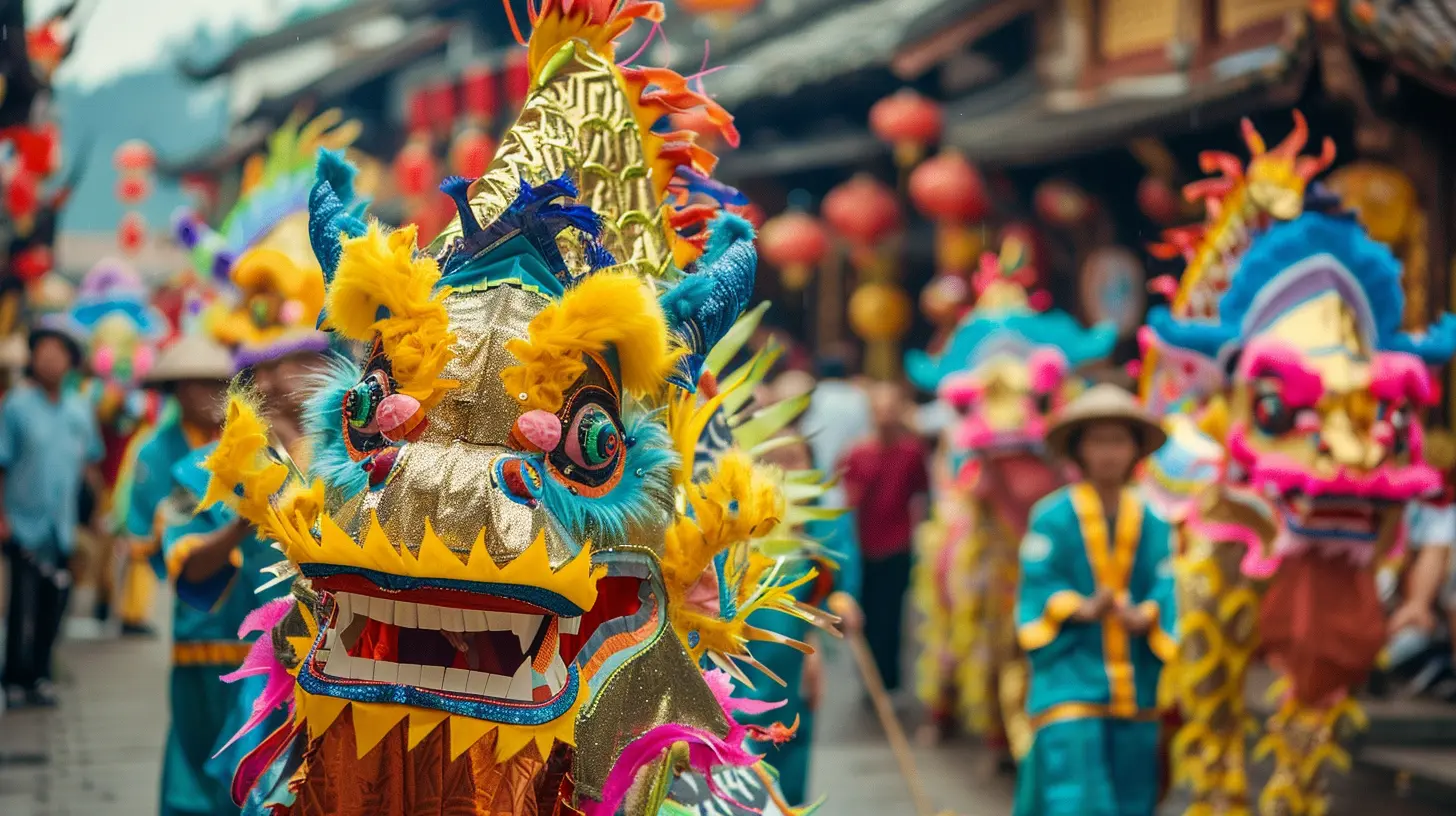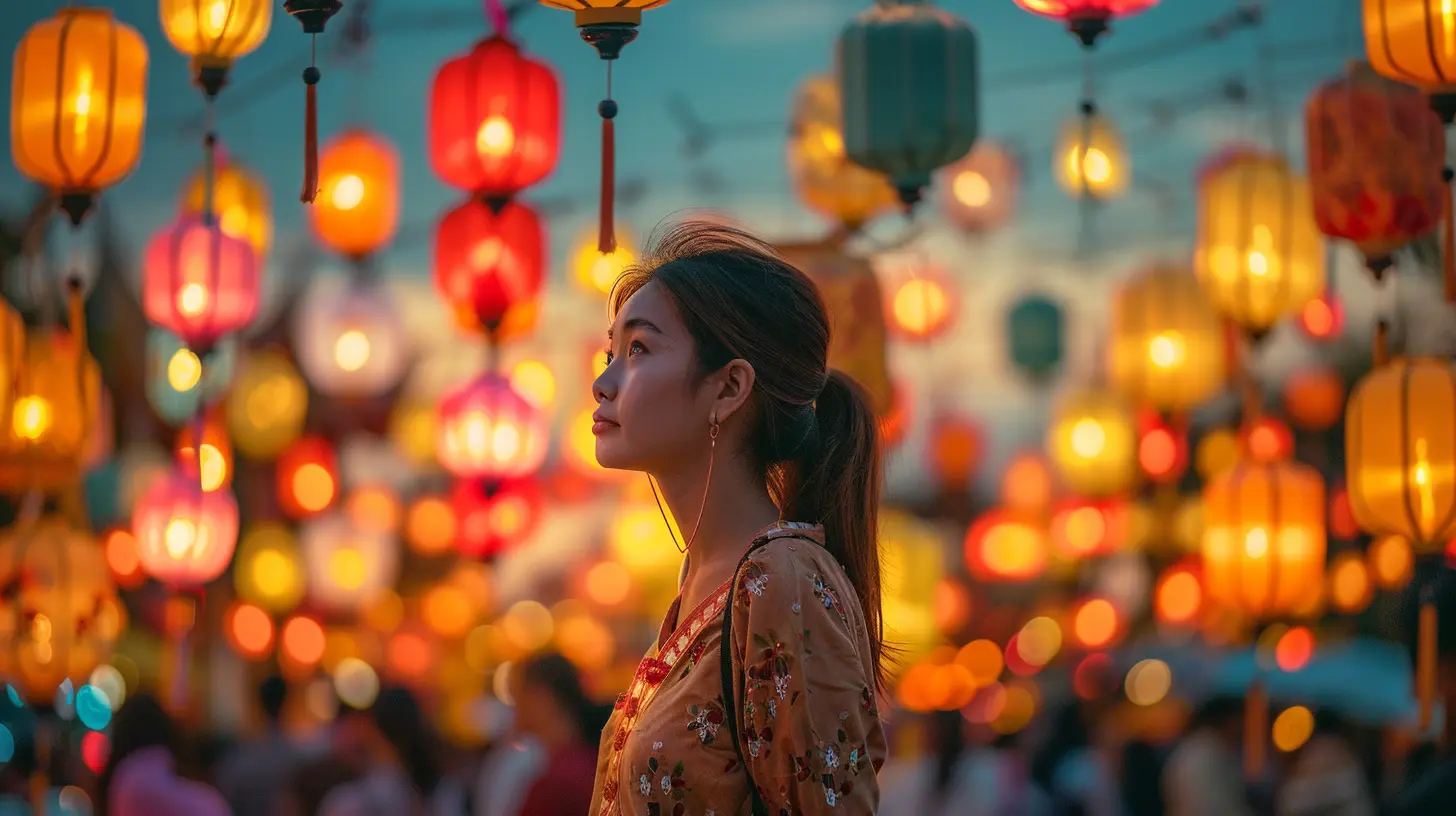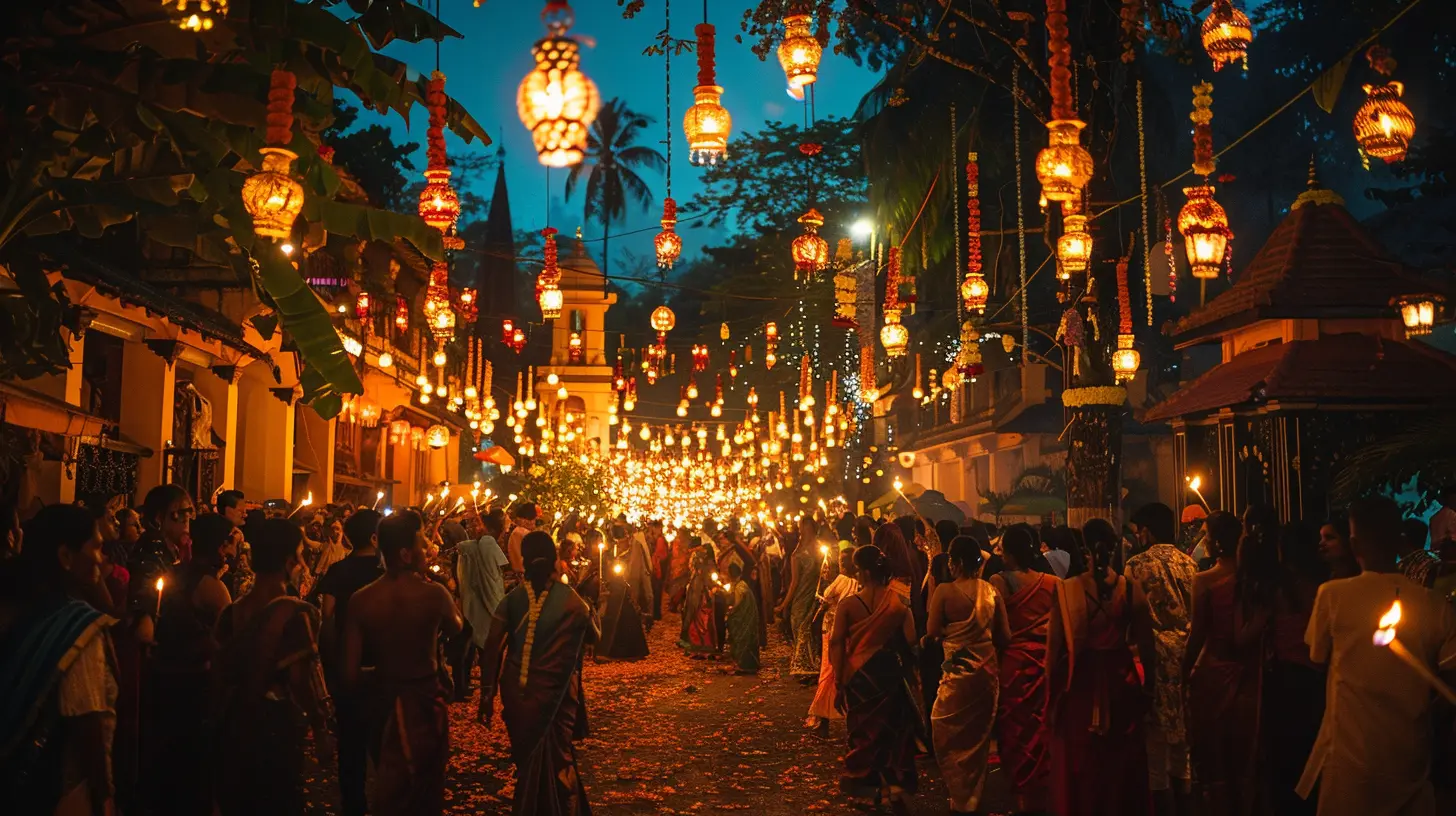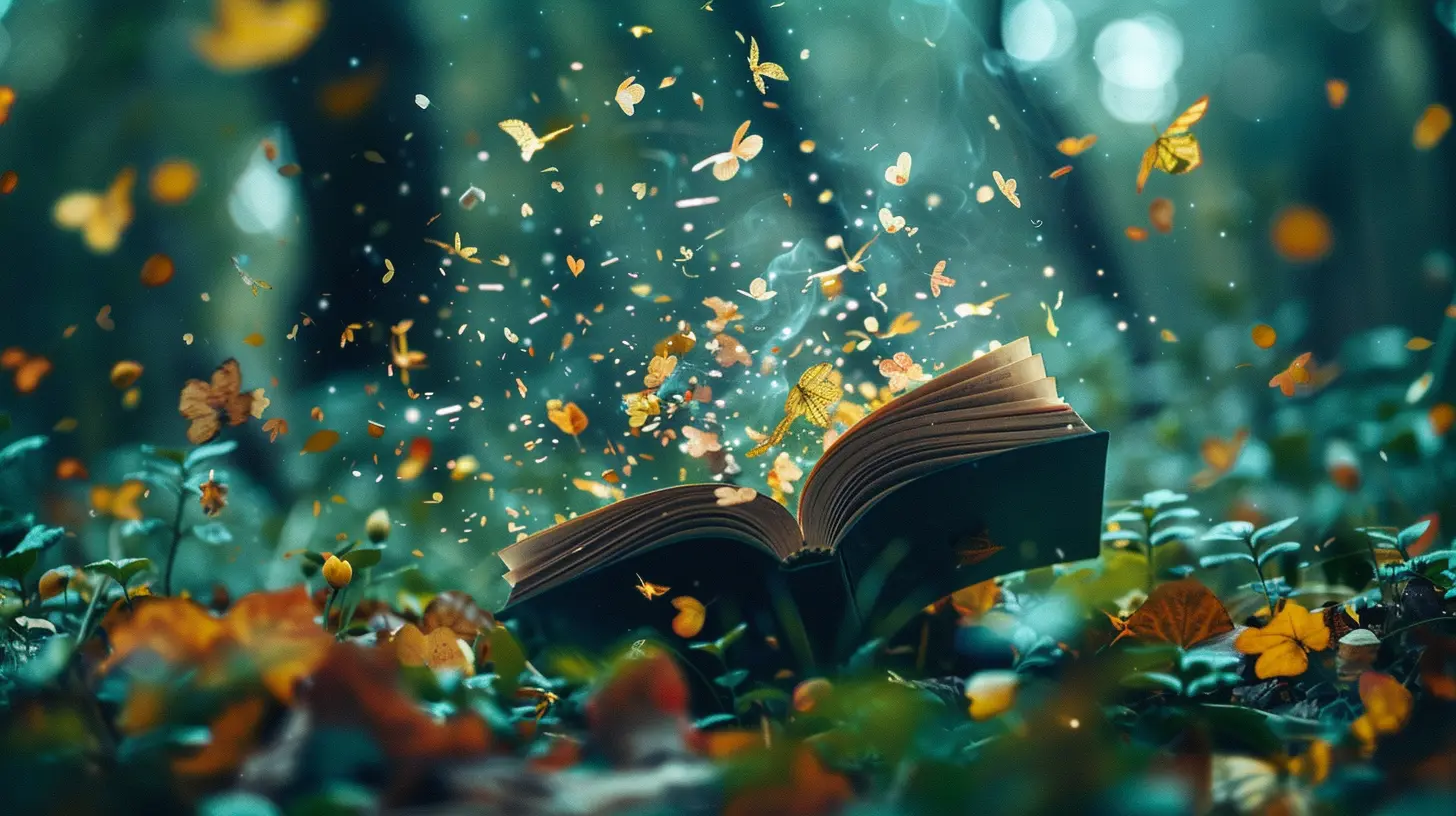Unique Ways Festivals Showcase Language and Literature
19 October 2025
Walk into a festival celebrating language and literature, and you won't just find dusty books or academic panels. Nope. You'll step into a world bursting with color, rhythm, voices, and stories. Language and literature festivals are way more than quiet readings—they're electrifying, cultural playgrounds where words dance and languages thrive.
If you thought reading was a solitary activity or that language only lives in textbooks, buckle up. Festivals around the world have taken it upon themselves to breathe life into words. These events create vibrant spaces where spoken word meets tradition, where ancient scripts blend with modern tech, and where storytelling becomes a shared experience.
Let’s dive headfirst into some unique ways festivals showcase language and literature, and why they're such powerful cultural touchpoints.
1. Storytelling Stages that Echo Across Cultures
Ever heard a story so moving it gave you chills? That’s the magic live storytelling can work—and festivals know this too well.🔥 The Power of the Spoken Word
At festivals like the Jaipur Literature Festival in India or the National Storytelling Festival in Tennessee, USA, storytellers command the stage, weaving tales with nothing more than their voice and expressions. These performances aren’t just entertainment; they’re oral traditions in action.From ancient African epics to Native American fables, storytelling sessions at festivals breathe life into cultural narratives. They also give indigenous and minority languages a platform, helping them survive and thrive.
👂 Listen Up: Language in the Flesh
You don’t read these stories—you feel them. Storytelling at festivals gives you the raw, emotional tone of a language—the cadence, the musicality, the emotion. When someone tells a story in Gaelic or Swahili, it opens a door into that culture’s soul.
2. Literary Parades and Language-themed Carnivals
Yes, you read that right. Some festivals literally take literature to the streets.🎭 Street Theater, Costumes, and Character Parades
Think Shakespeare in the Park? Now imagine that on steroids. At festivals like Bloomsday in Dublin, fans actually dress as characters from James Joyce’s “Ulysses” and parade through town retracing Leopold Bloom’s footsteps.In Colombia, the Hay Festival features vibrant street performances that mix drama, poetry, and music—all in Spanish and native dialects. Live interpretations of literary works happen on moving floats. Yep. Literature on wheels.
📢 Local Dialects on Display
These parades aren’t just fun—they’re educational. They highlight dialects and everyday expressions that formal literature often ignores. Imagine celebrating patois, slang, or colloquial phrases through public performances. That’s real inclusion.
3. Slam Poetry Competitions That Hit Hard
Forget polite clapping—slam poetry is about snapping fingers, throwing shade, and raw emotion.🧠 Language Meets Emotion
Spoken word artists don't just recite poems; they deliver explosions of anger, joy, love, and rebellion. At events like Brave New Voices (USA) or Global Voices at Cheltenham Festival (UK), young poets challenge injustice, express identity, and celebrate language diversity.What’s special? These slams often include poems in multiple languages or switch mid-sentence between tongues (code-switching). It’s linguistic magic and showcases how multilingual minds think and speak.
🎤 Giving Voice to the Unheard
Slam poetry festivals empower marginalized communities—people whose stories don’t usually make it into mainstream literature. Through this raw art form, language becomes a protest and poetry becomes a megaphone.
4. Interactive Language Zones & Translation Tents
Not all festival-goers are passive listeners anymore. Many festivals are building hands-on spaces where people engage with language.🗺️ Language Labs
At events like the Edinburgh International Book Festival, interactive language zones let you play linguistic games, try out translation puzzles, and even invent your own words (ever tried coming up with a word for the smell of pages in a brand new book?).You’ll find translation tents where you can watch a poem being translated into five different languages—showing you how meaning stretches, bends, and sometimes breaks. It’s like watching a master chef reimagine one dish five ways.
📚 From Passive Reading to Active Language Creation
These spaces make language tactile. It’s no longer something you study—it’s something you play with, create, and remix.5. Multilingual Book Fairs and Author Panels
Some festivals don’t just stick to one language—they celebrate them all. And it’s beautiful.🌍 World Literature Under One Roof
Think of book fairs like the Frankfurt Book Fair or PEN World Voices Festival in New York. They host authors from all over the globe—writing in Swahili, Arabic, Korean, Maori, and more.What happens? Authors talk about how language shapes their voice, how translating affects meaning, and how literature builds bridges between cultures.
🗣️ Simultaneous Translations and Subtitles
Many festivals now provide headphones for real-time translation or subtitle screens for live events. The result? A more accessible, inclusive space—because literature isn’t just for English speakers.6. Workshops on Ancient Scripts & Calligraphy Art
Literary festivals are going old-school—literally. They’re reviving history by showcasing ancient scripts.✍️ Hands-on Learning with Historical Flair
Some festivals, especially in Asia and the Middle East, offer workshops where you can learn to write in forgotten alphabets—Sanskrit, Cuneiform, Egyptian Hieroglyphics, or Arabic calligraphy.It’s not just about pretty handwriting. It’s a doorway into how language was built, how humans used symbols to share stories, and why preserving these scripts is crucial for understanding our past.
🖼️ Script as Art
Festivals often showcase exhibits blending calligraphy and modern art. You’ll see poetry written in Persian calligraphy framed as visual masterpieces. It’s a blend of literature and visual storytelling.7. Cultural Fusion Through Music and Lyrics
Music is language, too. And lyrics? They’re poetry on a rhythm.🎶 Song as Storytelling
Festivals like WOMAD (World of Music, Arts, and Dance) and Fête de la Musique often feature lyricists performing songs in endangered languages or blending folk traditions with modern genres.When you hear a lullaby from Papua New Guinea or a protest song in Catalan—you're not just vibing to a beat—you’re experiencing literature set to melody.
💃 Musical Interpretations of Literary Works
Some festivals actually get musicians to reinterpret literature. Classic poems become songs. Novels become operas. Suddenly, words have a soundtrack—and it hits differently.8. Immersive Installations and Augmented Reality (AR)
Who said books aren’t cool? Enter LitTech—the newest trend where tech meets text.🤖 Walk Through a Poem
In the U.S., the Poetry Foundation has created AR exhibits where you walk through a poem. Literally. Words float in the air. Lines light up as you step close. It turns literature into a physical journey.Some festivals have escape rooms based on famous novels—solving linguistic riddles and literary clues to "escape the story."
📱 Digital Realities and Language
Using apps and interactive maps, festivals are now enhancing your literary experience. You could stand in a square and hear what that spot sounded like a hundred years ago—in five different languages.This is next-level immersion.
9. Children’s Language Corners: Starting Young
Literary festivals have cracked the code—hook them young and they’ll love books for life.🧒 Puppet Shows, Rhyming Games, and Language Puzzles
Kids’ sections at festivals are crafted like mini-adventures. Puppet shows act out folk tales from around the world. Language puzzle stations teach words in different scripts. It’s Sesame Street meets the United Nations.📖 Multilingual Story Time
Children’s corners often feature story readings in multiple languages, exposing kids to different sounds, accents, and cultural narratives. It’s vital, especially in today’s globalized world.Why All This Matters
Festivals do something that classrooms often don’t—they make language and literature electric. They connect stories to people, not just as readers, but as participants.They turn literature from a passive act into an active experience. You hear the rhythm of a language. You see words perform. You touch scripts. You create stories.
And in doing so? They preserve cultural heritage, empower local dialects, and introduce new generations to the beauty of language in all its forms.
Final Thoughts
So next time you're planning a holiday, maybe skip the usual beach escapade. Instead, pack your bag for a festival celebrating language and literature. Trust me, it’s not just a book lover’s dream—it’s a human experience.Words, after all, build bridges. And festivals? They’re the architects.
all images in this post were generated using AI tools
Category:
Cultural FestivalsAuthor:

Winona Newman
Discussion
rate this article
1 comments
Rayna McFarlane
Festivals are the heartbeat of culture, boldly celebrating language and literature in vibrant ways. They ignite passion, foster connection, and unapologetically showcase the beauty of storytelling. Experience these immersive gatherings—where words come alive and communities unite!
October 21, 2025 at 3:41 PM

Winona Newman
Absolutely! Festivals truly bring language and literature to life, creating immersive experiences that unite communities and celebrate the power of storytelling.


